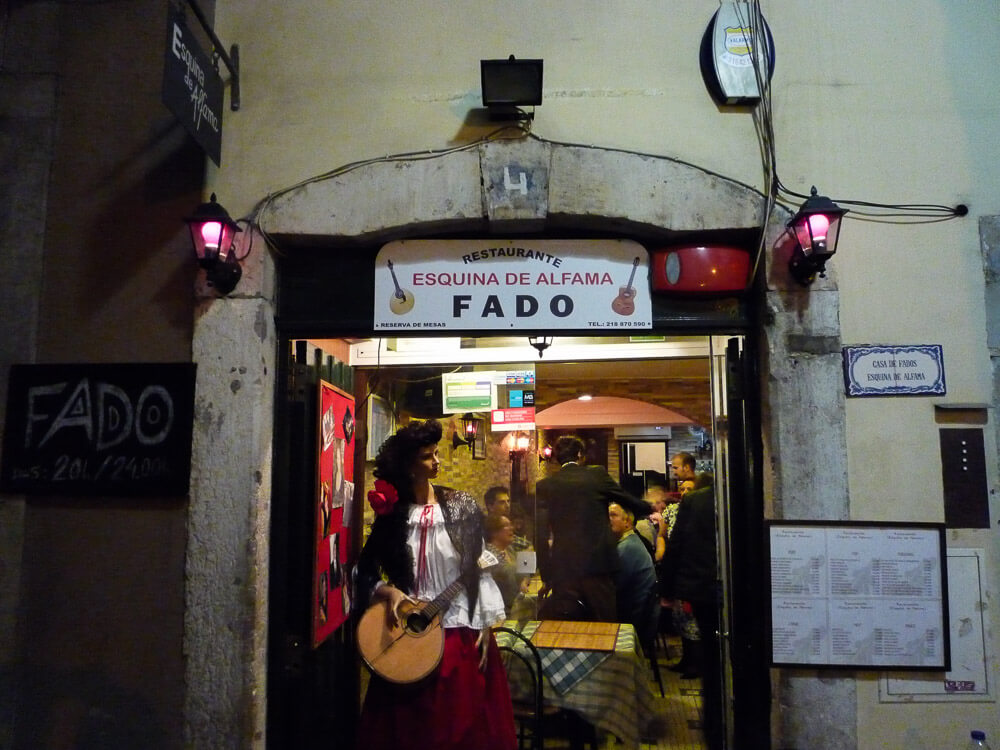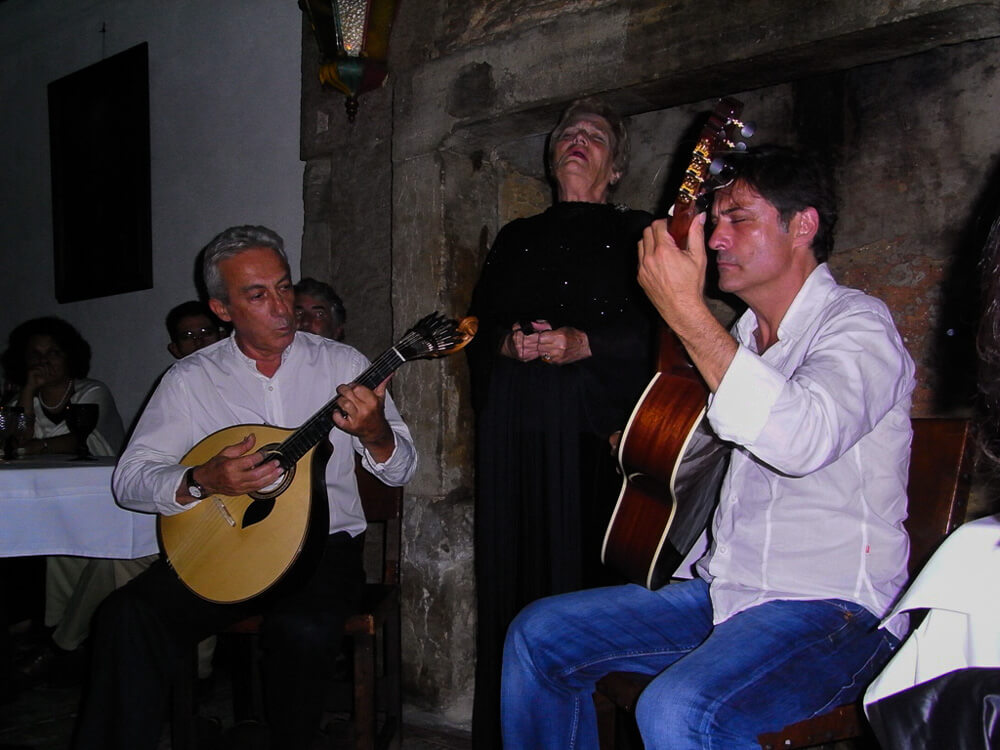Did you know that Lisbon in December is very charming, less crowded and more affordable? Those are just a few reasons why you should visit during winter. The rest of them I’ll tell you in this complete guide!
If you’re wondering if visiting Lisbon in December is a good idea, you can rest assured! Portugal has one of the most mild winters in all of Europe, with a fair share of sunny and warm-ish days. It’s no wonder so many people go to Lisbon to escape the harsh weather in nearby countries!
Besides, December is considered low season, which means less crowds and more attractive prices for flights and accommodations. Oh, and let’s not forget the amazing festive atmosphere you’ll encounter throughout the city!
Still not sure if Lisbon in December is right for you? Don’t worry, I’m here to help! This guide will tell you everything you need to know before booking your flight, including the best things to do, what to expect of the weather and packing tips.
Index
- Why visit Lisbon in December?
- Lisbon in winter: climate overview
- What to do in Lisbon in December?
- What to do on Christmas in Lisbon?
- Day trips from Lisbon in December
- Tips for choosing an accommodation
- Tips for navigating Lisbon with ease
- What to pack for the Portuguese winter?

1. Why visit Lisbon in December?
1.1. Lower costs
The first reason to visit Lisbon in December is something that every traveler will appreciate: lower costs. That’s because tourist numbers drop during late fall and winter, the low season, leading to more competitive pricing for travel expenses.
For example, hotels tend to lower their rates during this period, and you might even be able to book a fancy accommodation that normally wouldn’t fit your budget for much, much less than during the summer.
Eating out also becomes less expensive during the winter months, and restaurants that are typically busy or charge higher prices in the summer become easier to access and more affordable without sacrificing food quality.
1.2. Fewer crowds
In the last few years, Lisbon has become increasingly popular among tourists. This means that in the summer, it’s almost impossible to walk without bumping into at least 3 other travelers. Picture endless crowds and lines in the museums, viewpoints and restaurants… No, thanks!
The good news is that Lisbon in December doesn’t have that problem! The arrival of winter and its lower temperatures drive most of the tourists away, making the city much more peaceful and quiet.
Attractions that are usually packed become more pleasant, giving you the opportunity to explore at your own pace and notice things that might have been overlooked if you’d been trying to navigate through crowds of tourists.
Besides that, the smaller crowds allow for more meaningful interactions with locals and a genuine sense of everyday life in Lisbon. Basically, you’ll get the full Lisbon experience, just set against cooler weather, in a quieter and more laid-back environment. Sounds amazing, right?
1.3. Mild temperatures
Last but not least, Lisbon’s winter is known for being mild. It actually feels a lot closer to early spring than deep winter, unlike other destinations that are typically very cold and snowy this time of year.
Even in December, Lisbon maintains about six hours of sunlight, with pleasant daytime temperatures that allow for comfortable exploration and outdoor activities without much need for heavy clothing.
That being said, you should prepare yourself for some rain, as the winters in Portugal tend to be very wet. That shouldn’t be much of a problem, though, because there are plenty of indoor activities in Lisbon to keep you entertained when the weather is less than ideal!

2. winter in Lisbon: climate overview
2.1. November
Winter doesn’t start until December, but November is when temperatures start decreasing and the rainy season officially starts in Portugal. In fact, this is the rainiest month, with an average of 12 days of rain, totaling about 22mm. In terms of temperature, the averages are around 18°C (64°F) during the day and 12°C (54°F) at night.
2.2. December
December marks the beginning of winter in Lisbon, with cooler temperatures and fewer daylight hours. The average high temperature is around 59°F (15°C), and the low is 49°F (9°C). There’s an average of 10 days of rain, with about 18mm of precipitation.
2.3. January
January is the coldest month in Lisbon, with average temperatures reaching highs of 58°F (14°C) and lows of 47°F (8°C). There are about 10 days of rain in January, totaling approximately 14mm.
2.4. February
February in Lisbon signals a shift from winter to spring, as temperatures begin to rise and rainfall decreases. The average highs are 60°F (15°C) and lows are 48°F (9°C), with about 11 days of rain, amounting to roughly 13mm.
2.5. March
March is when winter officially gives way to spring in Lisbon. The days become longer and warmer, and rainfall decreases. Average temperatures rise to a high of around 68°F (20°C) and lows near 45°F (8°C), offering a more moderate climate. There’s an average of 9 rainy days, totaling about 12mm.
3. What to do in Lisbon in December?
3.1. Castelo de São Jorge

Located on one of the highest hills of Lisbon, Castelo de São Jorge is probably the most visited attraction in Portugal, with its well-known viewpoint that offers breathtaking views over the Alfama neighborhood and Tagus river.
During most of the year, the castle experiences a very large number of visitors, leading to crowded surroundings and long waiting periods. In the winter, however, there aren’t a lot of tourists, which means you’ll get a more peaceful experience and be able to better enjoy its architecture and views without feeling rushed.
3.2. Alfama

Alfama is Lisbon’s oldest district, the only one that wasn’t destroyed by the 1755 earthquake. During summer, this neighborhood is usually very busy with tourists attracted by its cultural sites, cafés and fado houses.
In winter, it becomes a lot different and, in my opinion, much more charming. The quiet cobblestone streets invite you to explore its historic buildings, try local food and have a coffee while enjoying views over the Tagus River.
Ultimately, I think visiting Alfama in the winter offers a chance to really immerse yourself in Portuguese lifestyle and engage with everyday life as if you were a local.
3.3. Portuguese cuisine

Portugal’s culinary scene is recognized for its diverse foods and wines, and no trip to Lisbon would be complete without trying the most traditional dishes in Portuguese history. Among them are:
- Bifana, a pork sandwich seasoned with garlic and spices;
- Bolinho de bacalhau, cod fritters;
- Pastéis de nata, the famous Portuguese custard tart
- Bacalhau, salted cod, a staple of Portuguese cuisine.
As for seasonal winter dishes, you’ll find:
- Rabanada, a cinnamon-spiced version of French toast
- Bolo Rei, a cake featuring crystallized fruits;
- Caldo verde, a robust kale soup;
- Formigos, a type of sweetened bread pudding;
- Filhós, fried dough that may be sugared or honeyed.
3.4. Miradouros

Another great thing to do in Lisbon in December is to take advantage of all the miradouros, viewpoints that offer wide views of the city, with less tourist traffic. These platforms dot the city’s hills and are very popular among both locals and visitors to see the city’s architecture and landscape.
The ones I recommend the most are Miradouro das Portas do Sol, which offers a broad view over the Alfama district, showcasing rooftops and streets leading to the Tagus River, and Miradouro de Santa Luzia, which has beautiful tiled walls and a gazebo.
Another unmissable view is at Miradouro de São Pedro de Alcântara, Miradouro da Graça, which also offers extensive views along with a café where you can relax with a drink while taking in your surroundings.
3.5. Ginjinha tasting

Ginja, or Ginjinha, is a traditional Portuguese liqueur made from sour cherries. The combination of cherries, sugar, water, and sometimes cinnamon gives it a unique taste that’s favored throughout Portugal.
The sweetness and spice of the liqueur are comforting when the weather cools down in Lisbon, and Ginjinha tastings become a very popular (and delicious) way of keeping warm during this time.
Some places also serve Ginja in chocolate cups, and I must say they complement each other wonderfully! Whether you prefer going to a typical Ginjinha bar or local markets, trying this liqueur is an essential part of experiencing Lisbon in winter.
3.6. Museums

If you catch some bad weather during your December trip to Lisbon, don’t worry! The city has over 60 museums that will help you gain insight into Portuguese culture and history, and I’m sure you’ll find at least one that fits your interests. Here are the main museums:
- Museu Nacional do Azulejo: focused on azulejos, or ceramic tiles, a significant aspect of Portuguese art, with a comprehensive collection that documents tile-making throughout history.
- Museu Calouste Gulbenkian: another great museum that features an extensive selection of art from different eras and regions.
- Museu do Fado: a must-visit for any music lover, this museum explores Fado music and its connection to local tradition.
- MAAT (Museu de Arte, Arquitetura e Tecnologia): addresses contemporary art and design;
- Museu Nacional dos Coches: an incredible collection of historical carriages;
- Museu Nacional de Arte Antiga: a museum where you can find European art from different time periods.
- MAC/CCB (Museu de Arte Contemporânea), located at Centro Cultural de Belém, contains numerous modern works by artists worldwide, from Andy Warhol to Picasso.
3.7. Pastéis de nata tasting and baking class

Pastéis de Belém, the only bakery that makes the original pastéis de nata recipe, is a must-visit any time of the year. But during winter it’s even better! With fewer tourists around, the wait times are reduced and the atmosphere is calmer, so you’ll get to take your time savoring these delicious custard tarts warm from the oven.
And, if the weather is too cold or rainy for outdoor activities, you can also take a pastry class from skilled local bakers. That way, you’ll be able to immerse yourself in Portuguese traditions through cooking, and have something more valuable than objects to bring back from your trip: the knowledge of how to make pastés de nata yourself!
3.8. Live fado show

Fado is a traditional music genre from Portugal, originating in Lisbon around the 1820s. It features distinctive melodies and lyrics that often touch on themes of longing and life’s challenges.
There are several venues throughout the city that offer Fado performances, a key part of Lisbon’s culture. However, in the busy travel seasons, it can be difficult to get into popular fado venues in Lisbon due to their popularity and limited seating.
During Lisbon’s winter months, though, there tends to be more availability at fado houses as the number of tourists decreases. This means you get to enjoy dinner and live music without even needing an early reservation.
4. What to do on Christmas in Lisbon?

4.1. Markets & seasonal displays
If you’re visiting Lisbon in December, you’ll notice that Christmas markets are a big thing! There, you’ll find local crafts and traditional Portuguese delicacies, such as roasted chestnuts and Bolo Rei, as well as homemade ornaments and special souvenirs.
Some of the most popular markets are: Rossio Christmas Market, Mercado da Baixa, Wonderland Lisboa, and Mercado de Natal do Campo Pequeno.
Besides the markets, Lisbon’s streets are also filled with the festive spirit, with plenty of lights and nativity scenes. The highlight is Praça do Comércio, which features the largest Christmas tree in Portugal and impressive lights, becoming a gathering place in the evenings.
4.2. Festive events & traditions
Lisbon has a lot of events happening the entire year, and December is no different. The Corrida São Silvestre de Lisboa, a notable year-end road race, occurs on the last Saturday of December, attracting runners from all over the world to Lisbon’s historical streets.
Other highlights are the Christmas concerts commonly held in churches across Lisbon, where locals go to listen to holiday music and get in the Christmas spirit.
Speaking of Christmas spirit, Portugal also has a couple of traditions that can be surprising for foreigners. For example, the festivities are focused on December 24th, Christmas Eve, when families come together and exchange gifts at midnight. It’s also customary to go to midnight mass or Missa do Galo, a significant religious event during this period.
Seasonal decorations stay up until January 6th, Kings Day or Dia de Reis, when Portuguese tradition dictates the end of festivities.
5. Day Trips from Lisbon in December

Winter is also a great time to go on day trips from Lisbon and take advantage of the fact that the crowds are mostly gone. Here are my main recommendations:
- Sintra, a short train ride away, is much more peaceful during the winter, which can definitely enhance your experience. You’ll have access to UNESCO World Heritage sites like Pena Palace, Quinta da Regaleira, and the Moorish Castle without the summer’s heavy tourist presence, ideal for an unhurried exploration.
- Nazaré is another amazing option, especially if you’re a surf enthusiast. This is where the largest waves in the world are found, and winter is when they’re at their peak, drawing surfers and onlookers to various points along the coastline.
- Cascais, a beach town close to Lisbon, is also a place I highly recommend that you visit. This beautiful place becomes quieter in winter months, giving you an opportunity to visit attractions such as Boca do Inferno, a seaside cliff known for its forceful waves, and walk along its beaches or through the town center without all the tourists.
6. Tips for choosing an accommodation
When planning a trip to Lisbon in the winter, it’s very important that you keep in mind that many hotels don’t have central heating. So, to ensure you’ll stay warm, I recommend searching for places that offer individual heaters and good insulation.
Besides that, location is very important. Staying in a central place may be more expensive, but it’s the best option if you have limited time or want to go on several day trips, as it provides easy access to transportation and attractions.
For those looking to save money, however, staying outside the city center may be a cost-effective choice. This could result in longer travel times to see Lisbon’s sights or take trains for day trips, but it can also reduce accommodation expenses substantially!
7. Tips for navigating Lisbon with ease
The first tip I’ll give you is something I wish someone had told me before I went to Lisbon: Portuguese pavement is slippery, especially when it’s wet! Don’t ever forget that, and it might save you some embarrassment.
Did I slip and fall in front of a bunch of people? You’ll never know! But anyway… Just wear comfortable shoes with traction and you’ll be fine!
I also recommend using public transport to help avoid walking on Lisbon’s slopes and slippery paths. The metro, buses, and trams are practical options for getting around, and as an added bonus they provide refuge from bad weather.
Another thing to keep in mind is that, even though Lisbon is quite safe, it’s always a good idea to keep your belongings close to prevent theft.
8. What to pack for the Portuguese winter?
Since the Portuguese winter can be quite unpredictable, with warm afternoons and chilly evenings, I recommend packing clothes that can be layered, such as long-sleeve shirts and light sweaters, which can go under heavier coats when necessary.
You should also bring items like scarves, warm socks, hats, and gloves to provide extra warmth in early mornings and late nights. Since it’s highly possible there will be some rain, packing a raincoat and umbrella will ensure you can continue your adventures comfortably, regardless of the weather.
Ready to get lost in lisbon’s winter charms?

December is a great time to visit Lisbon, offering travelers the chance for a quieter city experience, while still having an active cultural scene with plenty of events and festivities.
The cool but pleasant temperatures allow for outdoor activities, and the lower number of tourists provide more opportunities to engage with local life and more enjoyable visits to the main attractions.
So, don’t let the cooler temperatures get in the way of a great experience! Visiting Lisbon in December will make for an unforgettable experience and a unique perspective of the Portuguese lifestyle.







